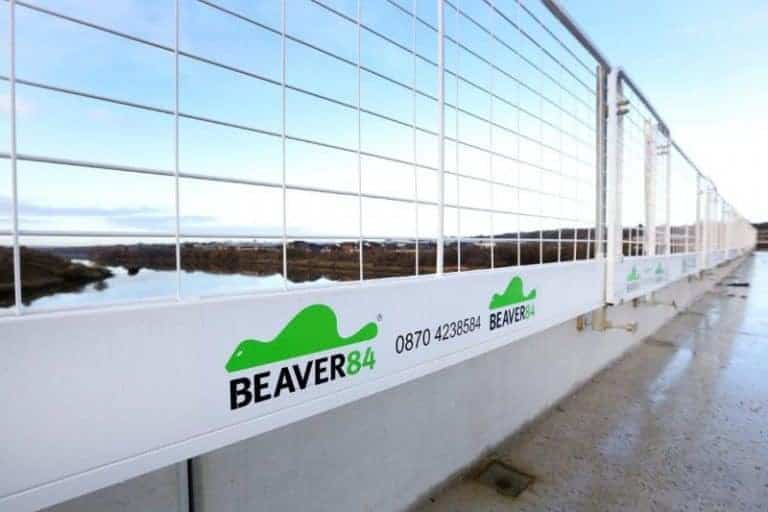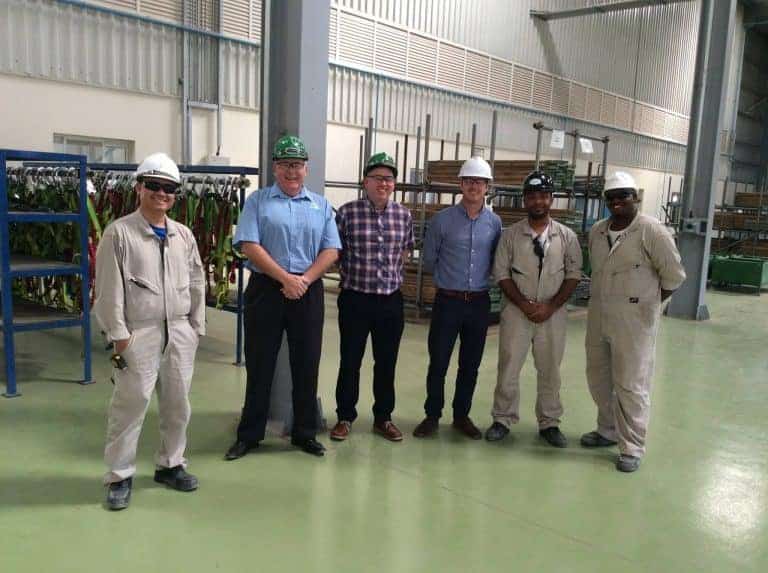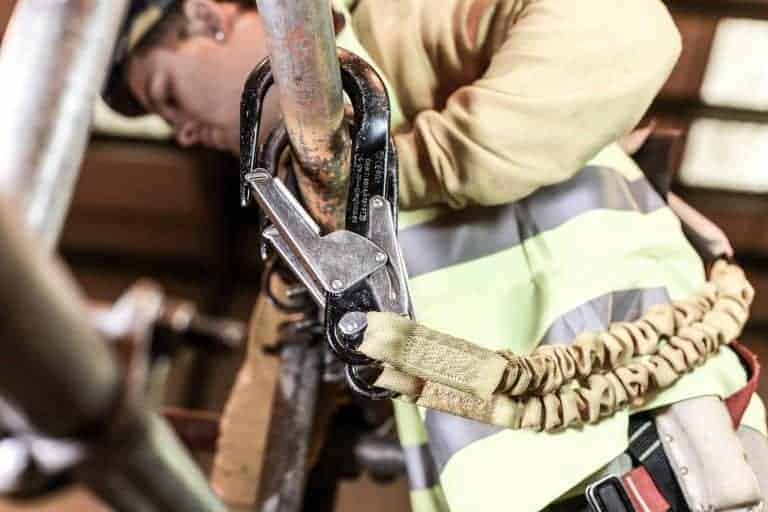Scaffolders Fundraiser Smashes £100K Target
Over £100,000 has been raised for scaffolder, Jamie Mines, after he lost both hands and a foot in accident at work in December.
As previously reported the scaffolder, footballer and father-of-two, was seriously injured before Christmas by an electric shock while working in Swindon.
According to reports Jamie is still in hospital recovering, but thousands of people across the country have come together to raise over £100,000 to donate to him and his family.
Jamie’s friend, Ian Kennedy, started the fundraiser in December with a target of £10,000. After finding out Jamie had to have three amputations, Ian upped the target to £100,000, and has so far raised over £106,000.
Ian said, “I’m overwhelmed by the amount of money that has been raised, and by the fantastic support. It’s a huge amount and I think it’ll keep going; it’s just the start of the help Jamie will receive from everyone around him.”
The fundraiser was spread widely online – with over 7,000 shares on Facebook, and football legends including Alan Shearer, Michael Owen and David Seaman have all sent video messages of support.
See also: Scaffolder loses leg and arms after being electrocuted
Ian says Jamie is still in isolation and recovering, but can communicate and has sent an email thanking him for starting the fundraiser.
Ian added, “Jamie’s got a long road ahead of him but he’s got so much determination and personality, I think he’ll be alright. He’s got his two girls for inspiration and, from what I hear from his brother, he is being positive about moving forward.
“I think so many people have gotten involved because it was such a freak accident. It happened just before Christmas and his daughters had just been born – the story has really touched people because it’s so horrific for him and his family.”
You can still donate to the fund by going to www.gofundme.com/raising-money-for-jamie-mines
Atlantic Scaffold Select Generation UNI Roof for Global Reach
 This was the first time that Atlantic Scaffold has used the UNI Roof, but they were reassured by the product design simplicity, quality, plus the Generation support that it would be possible to build the structure on the floor of the car park in 2 days and then crane it into position on the 3rd day.
Additional support was provided through Generation’s partnership with the manufacturer Dessa and Generation’s own in house engineering and design team.
The last lift was craned into position at sunset. In 3 days Atlantic Scaffold had managed to build and hoist into position the UNI Roof to provide their clients with a 100% weather proof structure. The Business Park opened for business as usual on Monday with no disruption to the neighbouring businesses.
Once the structure was in place, Atlantic Scaffold proceeded to infill and sheet the temporary roof. The UNI Roof’s patented Keder sheet tracking greatly helped the process and meant it was possible to add covering to the structure from the safety of the eaves.
Generation said: The Generation UNI Roof had once again proven through its cost effectiveness, compatibility, versatility, safe and quick erection times why it is the best solution in temporary roofing in the market.
Colin Davies, the MD at Atlantic Scaffolding said: “Generation Hire & Sales have been extremely helpful from the design process through to assisting with the erection of the UNI Roof on site. Without the UNI Roof solution and the support of the Generation team it would have been a significantly harder challenge to erect and position a temporary roof in the 3 days we were given.”
This was the first time that Atlantic Scaffold has used the UNI Roof, but they were reassured by the product design simplicity, quality, plus the Generation support that it would be possible to build the structure on the floor of the car park in 2 days and then crane it into position on the 3rd day.
Additional support was provided through Generation’s partnership with the manufacturer Dessa and Generation’s own in house engineering and design team.
The last lift was craned into position at sunset. In 3 days Atlantic Scaffold had managed to build and hoist into position the UNI Roof to provide their clients with a 100% weather proof structure. The Business Park opened for business as usual on Monday with no disruption to the neighbouring businesses.
Once the structure was in place, Atlantic Scaffold proceeded to infill and sheet the temporary roof. The UNI Roof’s patented Keder sheet tracking greatly helped the process and meant it was possible to add covering to the structure from the safety of the eaves.
Generation said: The Generation UNI Roof had once again proven through its cost effectiveness, compatibility, versatility, safe and quick erection times why it is the best solution in temporary roofing in the market.
Colin Davies, the MD at Atlantic Scaffolding said: “Generation Hire & Sales have been extremely helpful from the design process through to assisting with the erection of the UNI Roof on site. Without the UNI Roof solution and the support of the Generation team it would have been a significantly harder challenge to erect and position a temporary roof in the 3 days we were given.”
 Mark Ames, Generation Cardiff Branch Manager said: “Generation and the Cardiff branch can only be successful when our customers have the right products, service and support to do their jobs. It was very gratifying to work so closely with Atlantic Scaffold and ensure their success on such a high profile project in Wales. It is testament to the design and engineering of the UNI Roof, the Generation team effort and the working partnership we developed with Colin and his team that we were able to deliver a secure, quality and weather proof solution in such a short time frame.”
Mark Ames, Generation Cardiff Branch Manager said: “Generation and the Cardiff branch can only be successful when our customers have the right products, service and support to do their jobs. It was very gratifying to work so closely with Atlantic Scaffold and ensure their success on such a high profile project in Wales. It is testament to the design and engineering of the UNI Roof, the Generation team effort and the working partnership we developed with Colin and his team that we were able to deliver a secure, quality and weather proof solution in such a short time frame.” Storm Doris Rips Scaffolding from London Rooftop
Three plunge into water after bridge scaffolding collapses
A large scaffold under a bridge crossing in New Zealand has collapsed.
According to local media three people have plunged into the water and one person was trapped after the scaffolding collapsed at a bridge over the Panmure lagoon in east Auckland. The local Fire services managed to extract the man, who was stuck on his back on a beam running under the bridge. The fire service says the three who fell have been removed from the water. The cause of the collapse is unknown, but authorities are investigating.

Toe Board Gaps ‘Tamed’ by New Tamer Fitting
Two injured as scaffolding collapses in London street
A man is fighting for his life after falling from height while working on scaffolding at an address in London
The incident happened at around 11:30am this morning (Thursday 16th February) in Cricklewood Broadway, Police believe this was due to a scaffolding collapse near The Crown Hotel.
The air ambulance attended the scene along with the London Fire Brigade. A second man is also said to have fallen and was taken to hospital although his injuries are not life-threatening.
A police spokesman said: “We believe this to be a workplace accident and the Health and Safety Executive will be informed. “We were called at 11.38hrs on today (Thursday February 16) to Crickewood Broadway to reports of two males injured after falling from a height.”Two New Scaffolding Training Centres Open in Oman
The opening of two newly accredited scaffolding training facilities in Oman have been announced.
The new centres situated in Nizwa and Muscat represent a very important strategic base for scaffolding training by providing support to the major oil related industries in Oman. The project is being spearheaded by UK scaffold training provider Safety and Access Ltd (SA) with the established Oman-based training provider, Technical Training Institute (TTI) and training specialist provider Knowledge Grid (KG). Following a recent CISRS accreditation the new centres will now run a wide range of CISRS scaffold related training including scaffolder operative training, scaffold inspection and scaffolding supervisor courses. TTI has a proven track record of delivering training to multidiscipline contracting companies specialising in construction, fabrication and maintenance services for the energy and industrial sectors. Their existing training facility is large and spacious and finished to a very high specification and they are working on plans to build a brand new bespoke training facility for multi discipline trades in Oman in the near future. In a statement sent to ScaffMag, SA state that ‘prior to the accreditation a presentation was arranged with local key clients to outline the present and future plans for training and support in the area. It has been a requirement with several major clients in Oman for some time that independently accredited training is adopted by contractors and this new venture provides such support’. Following the accreditation, SA Joint MD Rick Statham said: ”The new centre represents a very important strategic location for us. We have been offering accredited training in the Gulf for over four years and we can see the requirement for quality training growing. It is yet another major step forward for the clients in the region to affirm their strict requirements for high standards of safety and technical delivery with the requirement for independently accredited training in the high risk area of scaffolding and work at height. The excellent centre here in Oman with our partners TTI will greatly complement the expanding need for such support for clients and contractors across the GCC and Asia.” CISRS Scheme Manager Dave Mosley who carried out the CISRS accreditation audit commented: “It is excellent to see Safety & Access expanding its presence in Gulf Co-operation Countries (GCC). We hope that this venture with TTI will be a great success and will continue to promote CISRS training benefits within the region. It is very encouraging to see a company willing to invest in their practical facility, I was impressed with the current set up and look forward to seeing the new centre when it is completed.”Middle East Shutdown Win for Cape
Cape plc sign major Qatar shutdown contract
International industrial services provider Cape have announced that their Qatar operations have signed a ‘major’ turnaround shutdown contract.
The contract with Qatar Engineering & Construction Company (QCON) will see Cape provide scaffolding, insulation, painting and refractory works at Qatar Petroleum’s NGL-4 plant.
Pre-shutdown activities commenced in December 2016 with all shutdown activities scheduled to be completed by April 2017.
See Also: CAPE extends contracts with EDF Energy
QCON is the leading maintenance contractor in the oil & gas, petrochemical, fertilizer and power industries. Formally known as MECON, the company was established in 1975. Since then, QCON has contributed immensely to the hydrocarbon infrastructural development in Qatar. QCON employs over 5,000 skilled personnel on permanent basis that are supplemented by short-term personnel as required to meet project needs.
Samir Chopra, Operations Director Qatar, commented: “We are proud that Cape is always trusted for such a challenging job and we are confident we will provide our services in a safe and efficient manner.”
The 9 Most Dangerous Jobs in Britain
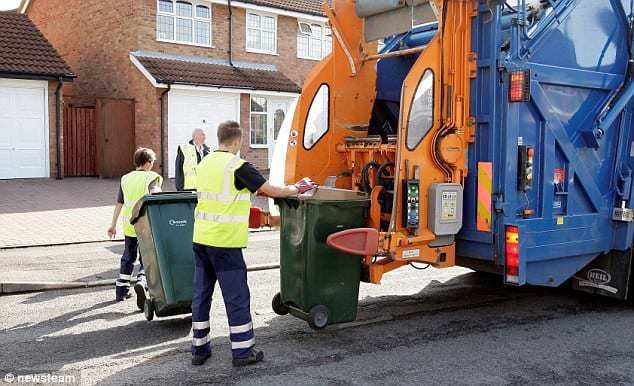 Operating heavy machinery and extremely heavy vehicles means that waste collection isn’t only a stinky dirty job, it can be a deadly one.
8. Civil engineering – 20 Deaths
Operating heavy machinery and extremely heavy vehicles means that waste collection isn’t only a stinky dirty job, it can be a deadly one.
8. Civil engineering – 20 Deaths Collapsed excavations, being hit by vehicles, coming into contact with electricity and even hyperthermia were just some of the causes of deaths for civil engineers.
7. Electricians and Plumbers – 26 Deaths
Collapsed excavations, being hit by vehicles, coming into contact with electricity and even hyperthermia were just some of the causes of deaths for civil engineers.
7. Electricians and Plumbers – 26 Deaths Falls were the top cause of death for electricians, not being electrocuted…as you may of thought.
6. Mechanics – 26 Deaths
Falls were the top cause of death for electricians, not being electrocuted…as you may of thought.
6. Mechanics – 26 Deaths With grease monkey mechanics spending much of their working day under cars and trucks it’s quite easy to identify the most immediate risk to them. But many mechanics are also called out to motorway breakdowns, which exposes them to further risks.
5. Chippies and Painters – 28 Deaths
With grease monkey mechanics spending much of their working day under cars and trucks it’s quite easy to identify the most immediate risk to them. But many mechanics are also called out to motorway breakdowns, which exposes them to further risks.
5. Chippies and Painters – 28 Deaths Here once again working from height is the culprit, with 18 out of the 28 deaths resulted from a fall.
4. Lorry Drivers – 41 Deaths
Here once again working from height is the culprit, with 18 out of the 28 deaths resulted from a fall.
4. Lorry Drivers – 41 Deaths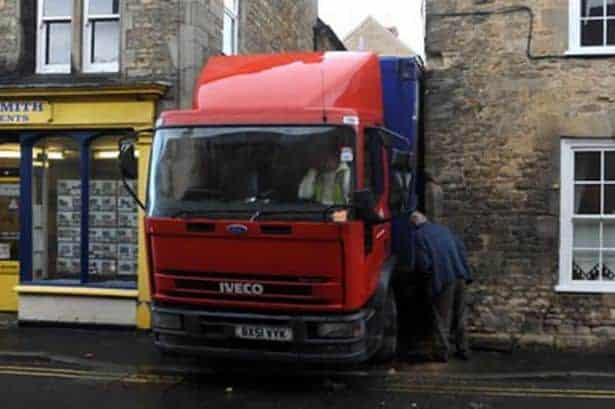 After falling, cars and lorries are one of the biggest causes of workplace deaths, with vehicle-related incidents, making up a fifth of all fatalities at work. Just over 40 HGV drivers have died in road accidents.
3. Roofing and Scaffolding – 69 Deaths
After falling, cars and lorries are one of the biggest causes of workplace deaths, with vehicle-related incidents, making up a fifth of all fatalities at work. Just over 40 HGV drivers have died in road accidents.
3. Roofing and Scaffolding – 69 Deaths The majority of workplace deaths are due to falls. Falling or injuries sustained while falling accounted for 29% of all workplace deaths last year — and scaffolding is one of the most dangerous careers in the country after 69 people died at work since 2010.
2. Construction – 101 Deaths
The majority of workplace deaths are due to falls. Falling or injuries sustained while falling accounted for 29% of all workplace deaths last year — and scaffolding is one of the most dangerous careers in the country after 69 people died at work since 2010.
2. Construction – 101 Deaths Almost 20% of workplace deaths in the UK are linked to accidents with heavy machinery, so it’s unsurprising that 101 people died in construction work. Half of the deaths on building construction sites were a result of a fall from height, but falling objects are also a risk.
1. Farming – 167 Deaths (Most Deadliest)
Almost 20% of workplace deaths in the UK are linked to accidents with heavy machinery, so it’s unsurprising that 101 people died in construction work. Half of the deaths on building construction sites were a result of a fall from height, but falling objects are also a risk.
1. Farming – 167 Deaths (Most Deadliest)  Agriculture is the UK’s most dangerous industry, with 167 deaths over the past year. Aside from coming into contact with heavy machinery and working from heights, farm animals also pose a danger. Animal-related incidents have accounted for 29 workplace deaths since 2010.
Data compiled and adapted by adzuna from HSE – 2010-2016 by
Agriculture is the UK’s most dangerous industry, with 167 deaths over the past year. Aside from coming into contact with heavy machinery and working from heights, farm animals also pose a danger. Animal-related incidents have accounted for 29 workplace deaths since 2010.
Data compiled and adapted by adzuna from HSE – 2010-2016 by 